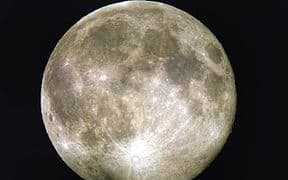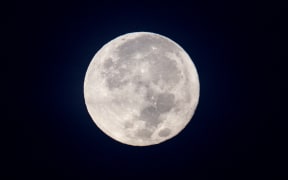The New Year full moon kept photographers and astronomers around the country snap happy last night.

An airplane passes across a full moon in the night sky over Tokyo on 2 January. Photo: AFP / Toshikazu Sato / The Yomiuri Shimbun
The so-called supermoon was the second of three brighter than average full moons for 2017 and early 2018. The US space agency Nasa said the New Year moon appeared six percent bigger and 14 percent brighter.
The term 'supermoon' is thought to have been coined by astrologists but is now used primarily by the media to describe a full moon at its closest orbital point to the Earth - known as perigee. The moon's orbit is not round, but elliptical, which means its distance from the Earth varies.
There is no visible difference to the human eye between a big, bright full moon and a so-called supermoon.
The “supermoon” emerges from fog over Dunedin earlier this evening. #supermoon #NewZealand #astronomy #DunedinNZ pic.twitter.com/3hSsLHlbtj
— Ian Griffin (@iangriffin) January 2, 2018
A Nasa explainer says the shape of the moon's orbit changes over time due to gravitational influence of the Sun and other bodies. Extreme points on the orbit, the farthest or closest points, happen on a predictable basis.
Those small relative changes in the moon's distance from the Sun cannot be distinguished by the human eye.
Tonight’s full Moon will be the biggest and brightest of 2018. Called the Wolf Moon, we’re calling it our #NewYearsDay Moon and the most super of the three supermoons this winter. Happy #MoonCrushMonday! https://t.co/s6Egk9vvTj pic.twitter.com/PAJfyzeKYz
— NASA Moon (@NASAMoon) January 1, 2018
The equivalent point on the Earth's elliptical orbit around the Sun - when the Earth is closest to the star - is known as the perihelion.
"It's hard for our eyes to distinguish these small changes in size when the Moon is high amidst the vastness of the night sky. But any time you catch a full Moon as it rises or sets, while it's suspended low on the horizon beaming through the silhouettes of trees or buildings, its apparent size might make you do a double-take. You almost feel as though you could reach out, grab the glowing orb, and drop it into your coffee cup. Even more so if it's a supermoon," Nasa says.
The New Year moon followed a December 3 supermoon. The next one is on January 31, which is the one to catch because it also coincides with a lunar eclipse.




